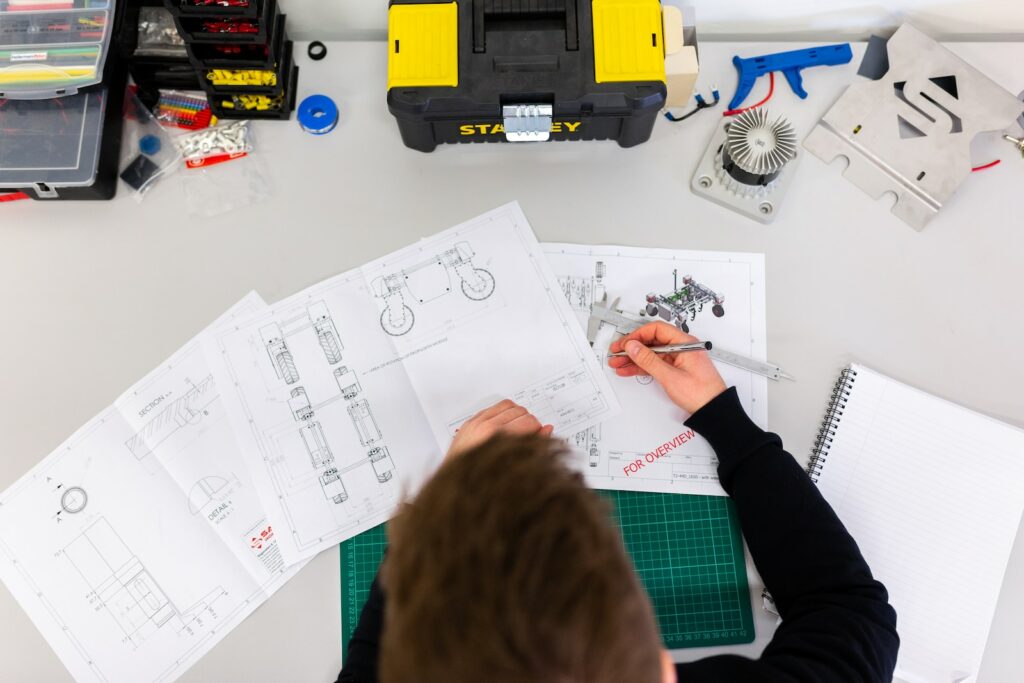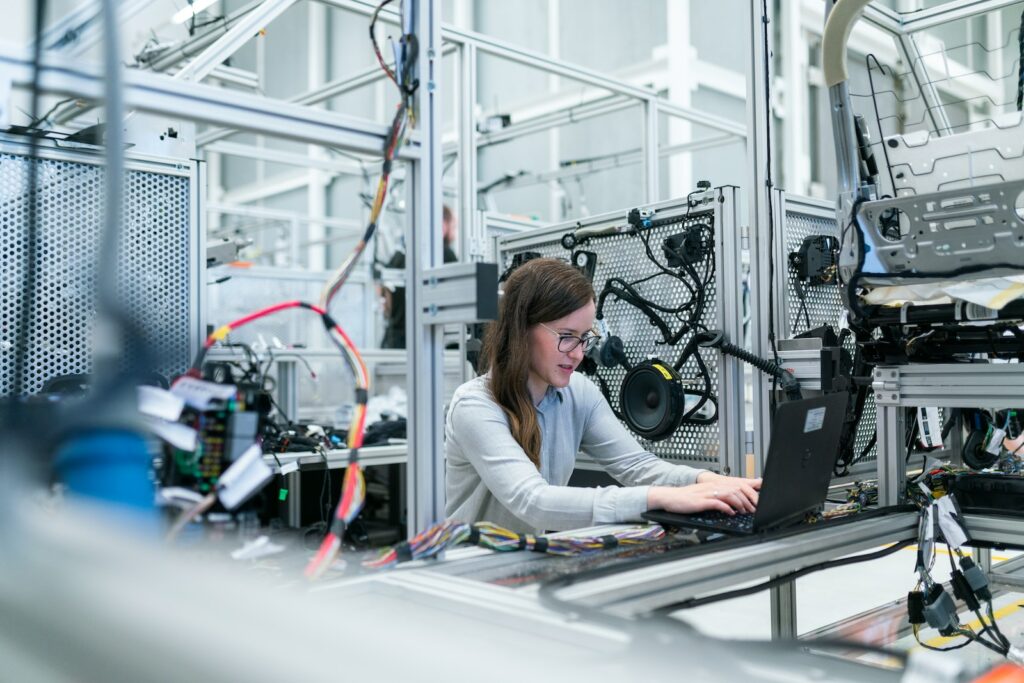Mechanical engineering is a broad and versatile discipline that encompasses the principles of physics, mathematics, and material science to design, analyze, manufacture, and maintain mechanical systems. At its core, mechanical engineering is concerned with the application of these principles to solve real-world problems. This field is foundational to many industries, including automotive, aerospace, energy, and robotics.
The versatility of mechanical engineering allows professionals to work on a wide range of projects, from designing intricate machinery to developing sustainable energy solutions. To grasp the fundamentals of mechanical engineering, one must first understand the key concepts that underpin the discipline. These include statics and dynamics, fluid mechanics, thermodynamics, and materials science.
Each of these areas plays a crucial role in the design and analysis of mechanical systems. For instance, statics deals with forces in equilibrium, while dynamics focuses on the motion of objects under the influence of forces. A solid foundation in these principles is essential for any aspiring mechanical engineer, as they form the basis for more advanced topics and applications in the field.
Key Takeaways
- Mechanical engineering involves the design, analysis, and manufacturing of mechanical systems and components.
- Mechanics and dynamics are essential concepts in understanding the behavior of moving objects and systems.
- Thermodynamics and heat transfer play a crucial role in the design and operation of mechanical systems.
- Materials science and engineering are important for selecting the right materials for mechanical components.
- Proficiency in CAD and CAE software is essential for designing and analyzing mechanical systems efficiently.
Learning about Mechanics and Dynamics
Mechanics is a branch of physics that deals with the behavior of physical bodies when subjected to forces or displacements. It is divided into two main categories: statics and dynamics. Statics involves analyzing systems in equilibrium, where the sum of forces and moments acting on a body is zero.
This area is crucial for understanding structures and ensuring that they can withstand various loads without collapsing.
Dynamics, on the other hand, focuses on systems in motion.
It examines how forces affect the motion of objects and how these objects interact with one another. This area is particularly important in fields such as automotive engineering, where understanding the dynamics of vehicles is essential for safety and performance. Engineers use principles of dynamics to analyze acceleration, velocity, and momentum, allowing them to design vehicles that can handle various driving conditions while maximizing fuel efficiency and minimizing emissions.
Studying Thermodynamics and Heat Transfer
Thermodynamics is the study of energy transfer and conversion, particularly in relation to heat. It encompasses several fundamental laws that govern how energy moves within a system and how it can be transformed from one form to another. For mechanical engineers, a thorough understanding of thermodynamics is vital for designing engines, refrigeration systems, and HVAC (heating, ventilation, and air conditioning) systems.
The first law of thermodynamics, which states that energy cannot be created or destroyed but only transformed, is a cornerstone principle that engineers apply in their designs. Heat transfer is closely related to thermodynamics and involves the movement of thermal energy from one object or substance to another. There are three primary modes of heat transfer: conduction, convection, and radiation.
Mechanical engineers must understand these modes to design efficient thermal systems. For instance, in designing a heat exchanger used in power plants or chemical processing facilities, engineers must consider how heat will be transferred between fluids to optimize performance while minimizing energy loss. This knowledge is also critical in developing insulation materials that reduce heat loss in buildings or industrial processes.
Exploring Materials Science and Engineering
Materials science is an interdisciplinary field that studies the properties and applications of materials used in engineering. Mechanical engineers must have a deep understanding of various materials—metals, polymers, ceramics, and composites—to select the appropriate ones for specific applications. Each material has unique properties that affect its performance under different conditions, such as temperature, stress, and environmental exposure.
For example, steel is known for its high tensile strength but may corrode if not properly treated or coated. The selection of materials is crucial in mechanical design because it directly impacts durability, cost-effectiveness, and overall performance. Engineers often use material selection charts to compare properties such as strength-to-weight ratio, thermal conductivity, and fatigue resistance.
Understanding these advancements allows mechanical engineers to push the boundaries of design and create more efficient systems.
Mastering Computer-Aided Design (CAD) and Computer-Aided Engineering (CAE) software
In today’s engineering landscape, proficiency in Computer-Aided Design (CAD) and Computer-Aided Engineering (CAE) software is essential for mechanical engineers. CAD software enables engineers to create detailed 2D drawings and 3D models of components and assemblies. This digital representation allows for precise visualization and modification before physical prototypes are built.
Popular CAD software includes AutoCAD, SolidWorks, and CATIA, each offering unique features tailored to different aspects of design. CAE software complements CAD by providing tools for simulation and analysis. Engineers can use CAE tools to perform finite element analysis (FEA), computational fluid dynamics (CFD), and thermal analysis on their designs.
These simulations help identify potential issues such as stress concentrations or thermal inefficiencies before manufacturing begins. For instance, an engineer designing a new automotive component can use FEA to predict how it will behave under load conditions, allowing for optimization before production. Mastery of these software tools not only enhances design accuracy but also significantly reduces development time and costs.
Gaining Knowledge in Manufacturing Processes and Machine Design
Manufacturing processes are integral to transforming raw materials into finished products. Mechanical engineers must understand various manufacturing techniques such as machining, casting, molding, welding, and additive manufacturing (3D printing). Each process has its advantages and limitations depending on factors like material type, production volume, and desired tolerances.
For example, machining is ideal for producing high-precision components but may be less efficient for large-scale production compared to casting. Machine design is another critical aspect of mechanical engineering that involves creating machines or systems that perform specific tasks efficiently and reliably. This includes understanding mechanisms such as gears, levers, pulleys, and linkages that transmit motion and force within machines.
Engineers must consider factors like load capacity, safety factors, and maintenance requirements when designing machines. A well-designed machine not only meets performance specifications but also ensures ease of operation and longevity.
Developing Skills in Project Management and Problem-Solving
In addition to technical expertise, mechanical engineers must develop strong project management skills to oversee complex engineering projects from conception to completion. This involves planning timelines, allocating resources, managing budgets, and coordinating teams across various disciplines. Effective project management ensures that projects are completed on time and within budget while meeting quality standards.
Problem-solving is another essential skill for mechanical engineers. They often encounter unexpected challenges during design or manufacturing processes that require innovative solutions. Engineers must be able to analyze problems critically, identify root causes, and develop effective strategies to address them.
This may involve brainstorming sessions with team members or utilizing analytical tools such as root cause analysis or failure mode effects analysis (FMEA). The ability to navigate challenges creatively not only enhances project outcomes but also fosters a culture of continuous improvement within engineering teams.
Building a Portfolio and Networking in the Mechanical Engineering Field
As aspiring mechanical engineers progress through their education and early careers, building a strong portfolio becomes essential for showcasing their skills and experiences. A well-curated portfolio should include examples of design projects, simulations conducted using CAD/CAE software, research papers or presentations on relevant topics, and any internships or co-op experiences that demonstrate practical application of engineering principles. This portfolio serves as a tangible representation of an engineer’s capabilities when applying for jobs or seeking advancement within their current organization.
Networking within the mechanical engineering field is equally important for career development. Engaging with professional organizations such as the American Society of Mechanical Engineers (ASME) or attending industry conferences provides opportunities to connect with experienced professionals and peers alike. These interactions can lead to mentorship opportunities, job referrals, or collaborations on projects.
Additionally, participating in online forums or social media groups dedicated to mechanical engineering can help individuals stay informed about industry trends while expanding their professional network. Building relationships within the field not only enhances career prospects but also fosters a sense of community among engineers who share similar interests and goals.
FAQs
What is a self-taught mechanical engineer?
A self-taught mechanical engineer is someone who has learned the principles and skills of mechanical engineering through self-study, rather than through a formal education program at a university or college.
What are the key skills and knowledge needed to become a self-taught mechanical engineer?
To become a self-taught mechanical engineer, you will need to learn about mechanics, thermodynamics, materials science, fluid dynamics, and other core principles of mechanical engineering. Additionally, proficiency in computer-aided design (CAD) software and a strong understanding of mathematics and physics are essential.
What are some resources for learning mechanical engineering on your own?
There are many resources available for self-study in mechanical engineering, including online courses, textbooks, video tutorials, and open courseware from universities. Additionally, joining online forums and communities can provide valuable support and guidance from experienced engineers.
What are some recommended topics to focus on when learning mechanical engineering on your own?
When learning mechanical engineering on your own, it is important to focus on topics such as statics and dynamics, thermodynamics, fluid mechanics, materials science, machine design, and control systems. Additionally, gaining practical experience through projects and internships can be valuable.
What are some challenges of becoming a self-taught mechanical engineer?
One of the main challenges of becoming a self-taught mechanical engineer is the lack of formal credentials, which can make it more difficult to find employment in the field. Additionally, self-directed learning requires discipline and motivation to stay on track and continue learning independently.





